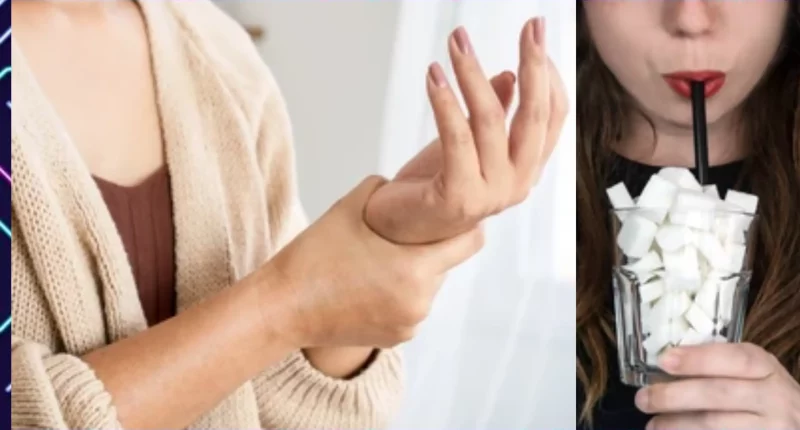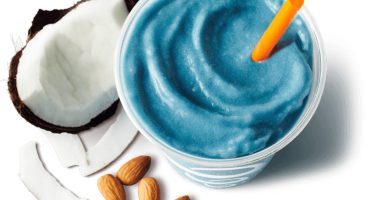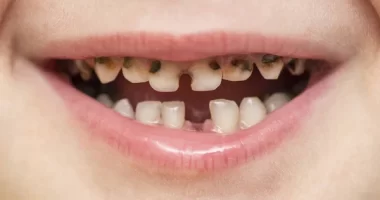Kicking the sugar habit benefits your bone health just as it favours your dental health and weight management. Excessive sugar consumption has been linked to increases in the risk of developing osteoporosis, especially in individuals with diabetes.
Diabetes and osteoporosis are two common conditions that often coexist and can negatively impact each other. Diabetes, especially type 1, increases the risk of developing osteoporosis, while osteoporosis can make managing diabetes more challenging.
Hyperglycemia, or high blood sugar levels, is the hallmark of diabetes and can have detrimental effects on bone health. Excess glucose in the body inhibits the activity of osteoblasts, the cells responsible for bone formation, leading to reduced bone mass. Additionally, advanced glycation end products (AGEs) accumulate in the bones of people with diabetes, causing abnormal cross-linking of collagen fibers and increased bone fragility.
Factors that contribute to the increased fracture risk in people with diabetes include muscle weakness, vision problems, low blood sugar episodes, and nerve damage (neuropathy) in the feet. Certain diabetes medications, such as thiazolidinediones (TZDs) and some SGLT2 inhibitors, may also negatively impact bone health.
Comorbidities associated with diabetes, such as kidney disease, cardiovascular disease, and diabetic retinopathy, can further increase the risk of osteoporosis and fractures. Diabetic neuropathy can lead to increased falls due to numbness in the feet, while retinopathy can impair vision and also contribute to falls.
To maintain healthy bones, people with diabetes should aim to control their blood sugar levels, get regular exercise, consume a diet rich in calcium and vitamin D, and avoid smoking and excessive alcohol consumption. Bone density tests, such as DEXA scans, can help identify osteoporosis early, allowing for timely intervention. To learn about nutrients good for bone health, check out Boron for Bone Health: Benefits and Possible Side Effects
How to support your bones and break the sugar habit
Here are some ways that you can dial back your sugar intake and free yourself of sugar addiction:
Exercise is a powerful tool for both breaking sugar addiction and maintaining strong, healthy bones. When you consume sugar, it activates reward pathways in the brain that release feel-good chemicals like dopamine. The same pathways are stimulated by exercise, but it takes much more effort and time to get the same pleasurable response from working out compared to eating something sweet. This is one reason why sugar can be so hard to quit – it provides instant gratification that exercise cannot match initially.
However, if you approach your exercise routine mindfully and view it as a positive habit rather than a chore, over time it can give you a similar satisfying feeling as eating sugar. Engaging in regular weight-bearing exercises like walking, running, dancing, or strength training not only helps build and maintain strong bones by stimulating the formation of new bone tissue, but it can also help curb sugar cravings by activating the brain’s reward system in a healthy way.
To effectively support your bone health while breaking the sugar habit, follow these six essential steps for regulating blood sugar and reducing sugar cravings. Many individuals find it relatively easy to avoid sugar until the afternoon slump hits, typically around 3 p.m. During this time, fatigue often leads to a desire for quick energy boosts, resulting in cravings for sugary or caffeinated snacks. This afternoon crash can derail your health goals, making it crucial to implement strategies to prevent it. Blood Sugar Regulation refers to the body’s ability to maintain optimal glucose levels in the bloodstream. High sugar intake can lead to spikes in blood sugar, which are followed by crashes that leave you feeling fatigued and craving more sugar. Here are the six steps to follow;
- Step 1: Recognize the 3 p.m. Slump – If you consistently experience a drop in energy at the same time each day, consider taking a brisk walk to rejuvenate yourself—just avoid heading to the nearest coffee shop for a sugary fix. Physical activity can help stabilize blood sugar levels and improve mood, thanks to the endorphins released during exercise.
- Step 2: Opt for Protein-Rich Snacks – Incorporating protein-rich snacks into your afternoon routine can significantly help curb cravings. Foods like nuts, cheese, or Greek yogurt provide essential nutrients that stabilize blood sugar levels and promote satiety, reducing the likelihood of reaching for sugary snacks.
- Step 3: Manage Sugar Cravings – When you decide to cut back on sugar, be prepared for cravings, which can last for two to three weeks. During this time, distract yourself with activities or choose healthier alternatives, such as dark chocolate or fresh fruit, to satisfy your sweet tooth without compromising your health.
Step 4: Explore Sugar Alternatives – Consider using natural sugar substitutes like stevia or xylitol, which do not affect blood sugar levels. These alternatives can be used in beverages and baking, allowing you to enjoy sweet treats without the negative impacts of refined sugar. Notably, xylitol also helps reduce harmful bacteria in the mouth, promoting dental health. - Step 5: Stay Hydrated and Mindful – Hydration plays a key role in managing cravings. Drinking water or herbal teas can help you feel full and reduce the desire for sugary snacks. Additionally, practice mindfulness by being aware of your eating habits and emotional triggers that lead to sugar consumption.
- Step 6: Embrace Persistence – Breaking the sugar habit is akin to overcoming any addiction; it often requires multiple attempts. If you slip up and indulge in sweets, don’t be discouraged. Instead, reflect on your goals, hydrate, and recommit to your plan. With time and persistence, you’ll find that your cravings diminish, and you can enjoy a healthier lifestyle without the burden of excessive sugar.
Managing sugar cravings is essential for both bone health and overall wellness. When individuals decide to eliminate sugar from their diets, it’s common to experience intense cravings for two to three weeks, especially if they quit “cold turkey.” This phenomenon occurs because sugar activates the brain’s reward pathways, similar to addictive substances. To effectively combat these cravings, engaging in physical activity can be beneficial. Exercise not only distracts the mind but also stimulates the release of endorphins, which can mimic the pleasurable feelings associated with sugar consumption.
If cravings persist despite exercise, opting for naturally sweet alternatives is a wise choice. Foods like dark chocolate or fresh pineapple chunks can satisfy your sweet tooth while providing nutrients that are beneficial for bone health. For instance, dark chocolate contains antioxidants and minerals, while pineapple is rich in vitamin C, which supports collagen formation, crucial for bone density.
In addition to dietary adjustments, ensuring adequate intake of essential vitamins and minerals is vital. A multivitamin that includes at least 200 micrograms of chromium can be particularly effective. Chromium plays a key role in stabilizing blood sugar levels, which can help reduce sugar cravings. For example, the Better Bones Builder supplement contains 300 micrograms of chromium, making it a valuable addition to your regimen.
Explore sugar alternatives. There are several sugar alternatives that not only satisfy your sweet tooth but also provide additional health benefits, particularly for your bones. One popular sugar substitute is xylitol, a naturally occurring sugar alcohol derived from birch wood or other hardwood trees. Unlike regular sugar, xylitol has a low glycemic index, meaning it doesn’t cause sharp spikes in blood sugar levels. This makes it an excellent choice for individuals with diabetes or those looking to maintain stable blood sugar levels. Xylitol also has unique properties that can support bone health. Studies have shown that xylitol may enhance calcium absorption and increase bone mineral density. This is particularly important for maintaining strong, healthy bones throughout life.
Another sugar alternative that has gained popularity in recent years is stevia, a plant-based sweetener extracted from the leaves of the Stevia rebaudiana plant. Stevia is calorie-free and has no impact on blood sugar levels, making it a suitable choice for people with diabetes or those following a low-carb diet
Be prepared to try again… and again. Eliminating sugar from your diet can feel like a daunting task, akin to quitting smoking, as both involve overcoming addictive behaviors. When you experience setbacks, such as indulging in cookies or ice cream, it’s essential not to dwell on guilt. Instead, refresh yourself with a glass of water or a soothing cup of herbal tea. Remind yourself of the significant benefits of reducing sugar intake, particularly for your bone health. High sugar consumption has been linked to various health issues, including osteoporosis, as it can deplete essential minerals like potassium and magnesium and interfere with vitamin D metabolism, all critical for maintaining strong bones.
As you navigate this process, remember that persistence is key. Each attempt to manage sugar cravings is a step toward success. Over time, you may find yourself reflecting on weeks or even months of reduced sugar intake, realizing that the cravings have diminished significantly. This journey not only supports your bone health but also enhances your overall well-being.
If you have osteoporosis, these 7 Best Teas To Drink Can Help Improve Bone Density and Osteoporosis
References
- Avena NM, Rada P, Bartley Hoebel BG. Evidence for sugar addiction: Behavioral and neurochemical effects of intermittent, excessive sugar intake. Neurosci Biobehav Rev. 2008; 32(1): 20–39.
- Codella R, Terruzzi I, Luzi L. Sugars, exercise and health. J Affect Disord. 2017 Dec 15;224:76-86. doi: 10.1016/j.jad.2016.10.035. Epub 2016 Oct 27.
- DiNicolantonio J, Mehta V, Bin Zaman S, O’Keefe J. Not salt but sugar as aetiological in osteoporosis: A Review. Missouri Med. 2018;115:247–252.
- DiNicolantonio JJ, O’Keefe JH, Wilson WL. Sugar addiction: is it real? A narrative review. Br J Sports Med. 2018 Jul;52(14):910-913. doi: 10.1136/bjsports-2017-097971. Epub 2017 Aug 23.









